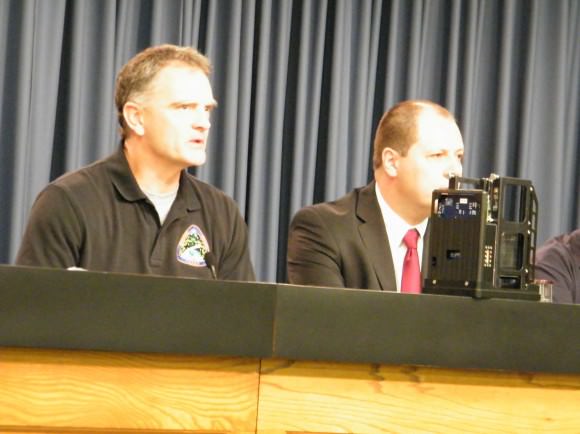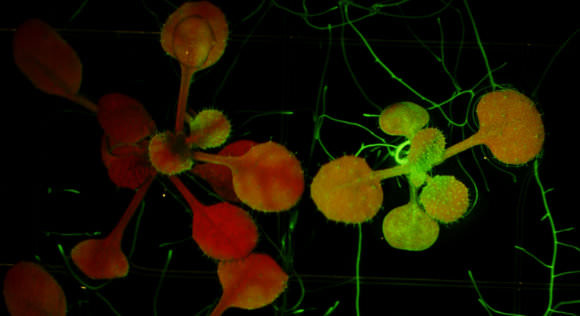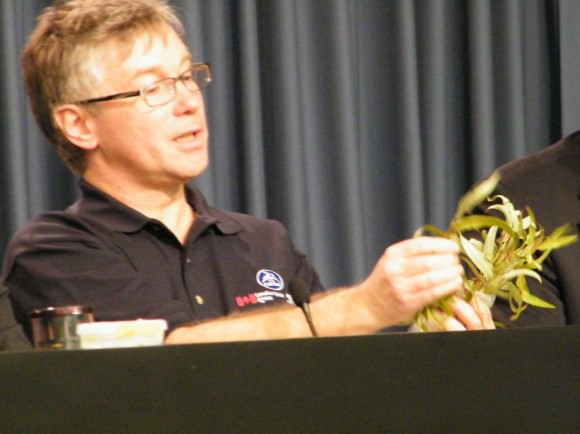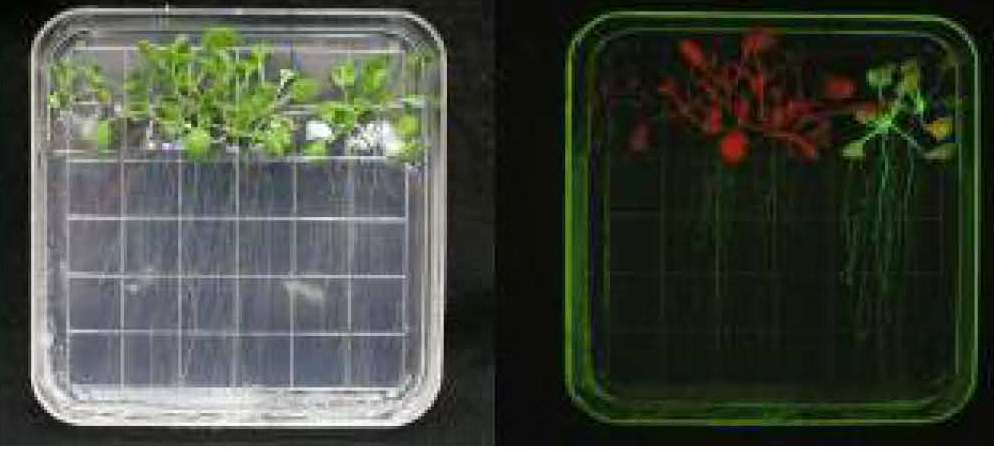[/caption]
Glowing plants from space? Sounds like science fiction or the next B-horror movie. But glowing plants, willow trees, potential biofuels and more are being studied on the International Space Station and are part of key research in biotechnology, physiology, life sciences, and physical sciences going on in space. “This is not your grandfather’s backyard garden,” said Dr. Robert Ferl from the University of Florida, Gainesville.” We are now understanding fundamental biological principals that essentially can only be studied when you leave the surface of the Earth.”
Scientists are abuzz this week with the newly proposed 2011 NASA budget which extends the life of the International Space Station to 2020, and perhaps beyond. “The possibility of an expanded budget for full utilization of the space station means that scientists can do the research and also the technology development that will fulfill the complete potential of ISS,” said Julie Robinson, program scientists for ISS, “and that we will be able to bring back to Earth all the benefits that our new knowledge and technology can provide.”
At a press briefing today at Kennedy Space Center, a group of scientists shared current and future science investigations for the ISS, and the highlight was seeing some plants that actually glow in different colors to give scientists cues to what is taking place within the plant.

The Advanced Plant EXperiments on Orbit – Transgenic Arabidopsis Gene Expression System (APEX-TAGES) investigation uses Arabidopsis thaliana, or thale cress that has genetically modified so it can glow.
“Plants don’t talk a lot,” said Ferl, “so molecular biologists have been able to equip plants with the tools to have them communicate with us. Plants can glow with certain colors when certain genes are activated, when things happen like changes in their environments.”
APEX-TAGES uses a new real-time imaging system in conjunction with the “glowing” that removes the need for harvesting thereby allowing the plant to continue to grow and making it possible to follow the development of stress in a plant over time. The experiment also doesn’t require a lot of time and interaction from the ISS crew, as digital images can be transmitted from the site of the experiment to the site of the researchers.

Plants get cues from things on Earth, such as light, gravity, humidity. The question is, Ferl said –which applies to all biology — is what happens to terrestrial biology when it is no longer on Earth? Key to the research is understanding the adaptations that have to take place in order for plants in space to continue to grow successfully and produce fruit.
“What are the limts to terrestrial biology? How far can it travel and explore?” said Ferl “50% of plant DNA is like ours, and 80% of plant genes are like ours. So plants can support us with food, air, and water revitalization, but they are interesting because by studying them we learn more about what happens to complex biology as it leaves the surface of the earth.”

Also highlighted at the briefing were studies of plant cell metabolism of a potential biofuel plant, Jatropha, and research done on the first trees ever grown on the space station, Canadian Cambium willow trees, that was sponsored by the Canadian Space Agency and performed on orbit by Canadian astronaut Robert Thirsk, who just returned from the ISS in November.
Robinson also discussed an experiment on the ISS that found a better method of producing microencapsulated drugs for cancer and diabetes. A patent was issued at the end of 2009 and clinical trials are now being scheduled.
With $50 million of the proposed budget going directly to ISS, as well as additional funds coming from the NASA’s Science Directorate and technology development, Robinson said that scientists and technology developers will be fully utilizing the ISS as a National Lab in the coming years.
For more info:
The International Space Station Science webpage.
The APEX-TAGES experiment.
Webpage of Dr. Werner Vendrame and his research with the Jatropha plant
Webpage from the Canadian Space Agency on the willow trees grown on the ISS.


Today’s “glowing plants” were a great attention-grabber to get my children to finally sit through an entire briefing with me. 🙂
“principals” should be “principles”
…erm… I’ll collect my hat and coat and let myself out, shall I?
Yawn, standard techniques nowadays AFAIU. 😀
But I think I understand the politics behind the immediately possible support of the new budget strategy. The remainder must surely follow in the ‘weeks but not years’ that delays a new NASA plan corresponding to it.
Wait till they get the glo’ fish and mice up there, to look at 0g receptor and hormonal responses as well as development! (And I’m pretty sure there are some bugs in the system as well.) “Cosmic menagerie” will get a whole new meaning.
You think this will result in anything practical? (No sarcasm intended)
I never could believe that they (gov’t et al) could just get the ISS finished and running good, and then shut it down again. Maybe I’m wrong, but it seems the public might have revolted somehow. If nothing else, so much $$$ in it and then just quit ??? This seemed to be in the back closet for a long time. I’m glad somebody found it and dusted it off again. It’s a great science station in sooo many ways!